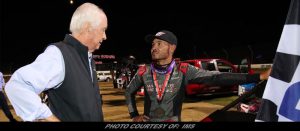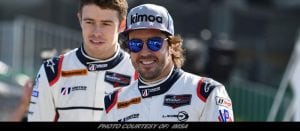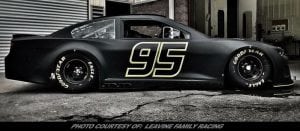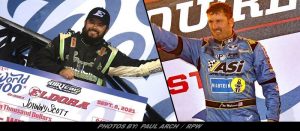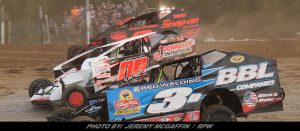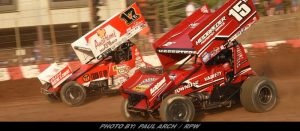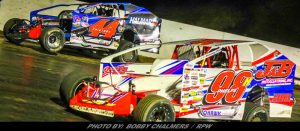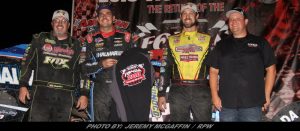Kevin Harvick Says Danica Patrick Started Her Stock Car Career At A Disadvantage
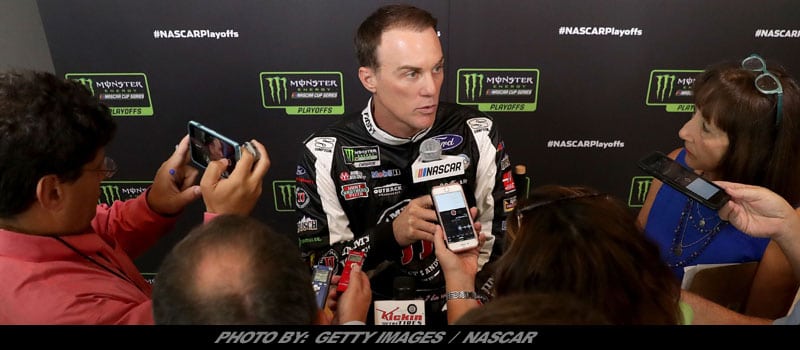

Column By: REID SPENCER / NASCAR – CHARLOTTE, NC – On February 18, in the 2018 Daytona 500, Danica Patrick will drive a Monster Energy NASCAR Cup Series car for the 191st time.
It will also be the last.
Last November at Homestead-Miami Speedway, a tearful Patrick announced she would end her driving career with the “Danica Double”—final appearances in both the Daytona 500 and Indianapolis 500.
Patrick confirmed on Monday she will drive the No. 7 GoDaddy Chevrolet fielded by Premium Motorsports in her stock car swan song. Both the car number and sponsor harken to her NASCAR debut.
Patrick will leave stock car racing disappointed with a record that includes no victories or top fives and seven top 10s in her first 190 starts in NASCAR’s top series.
On the other hand, she will take with her the memory of a pole position for the 2013 running of the Great American Race and a career-best fourth-place finish in the NASCAR XFINITY Series event at Las Vegas in 2011.
With her seven top 10s in the Monster Energy Series, Patrick is tied with Janet Guthrie for most ever by a female driver.
But former Stewart-Haas Racing teammate Kevin Harvick reiterated on Tuesday during NASCAR Media Day hosted by Charlotte Motor Speedway something he had expressed a few years earlier—that Patrick had begun her career in stock cars at a disadvantage to more experienced drivers and had little prospect of closing the gap.
“You know, this is a conversation that I had with her,” Harvick said. “I had 20 years on her when she started in a stock car. That is experience, and the things that come with that, you are never going to make up that ground. As long as I’m still racing, I’m going to be 20 years ahead regardless. I think it never is going to be easy to go from (IndyCars to NASCAR) if you are going to be at the top level of that sport for a long time because the cars are…
“I have never driven an IndyCar, but based on everything I’ve heard, the characteristics and how you drive them are 180-degrees different. It has been very hard for a lot of the open-wheel guys to come over here and drive these (3,300-pound) cars. It’s the total opposite of everything they have been taught their whole lives.
In Harvick’s opinion, the career path a driver chooses at an early age is a good predictor of performance in the respective disciplines.
“A lot of the kids we have coming up through our ranks now have been in stock cars since they were 12 or 13 years old,” said the 2014 series champion. “It’s much different. I think you have to pick a path. If you want to race open-wheel cars and do those things, it’s probably going to be carts and into an open wheel series.
“There are very few people that have been able to do them both. Tony Stewart and (Juan Pablo) Montoya have done it the best in my opinion. Might be somebody else I am missing. But there have been a lot that have tried.”
KYLE BUSCH: NO-RIDE-HEIGHT RULE PROMOTES SAFETY AT SUPERSPEEDWAYS
Last year, NASCAR mandated post-race ride height measurements only at the superspeedways—Daytona and Talladega.
This year, cars at those two restrictor-plate tracks are also exempt, and that, says Kyle Busch, is a bonus when it comes to the well-being of the drivers.
“I think it’s going to be better for the safety aspect,” Busch said. “I think, obviously, with all of us trying to get our cars as down and as low as possible that that’s going to be really good for us for lift off speeds and things like that. When the car gets turned around, it’s not going to want to lift as fast.
“We kind of saw that a couple years ago. I think Matt (Kenseth) actually went upside down at Talladega—well, a few guys went upside down, but Matt most notably. When the car turned sideways, it automatically lifted and then it just kind of went over. Now when the car gets sideways and turned, it’s not going to lift because it doesn’t want to rebound. It doesn’t want to be pushed back up because of the soft springs and the ride height rule.”
Busch isn’t certain how the new rule will affect the handling of the cars on the plate tracks, but he hopes it makes them more difficult to drive.
“Maybe hopefully it’ll make the cars drive worse, so then there is some handling that comes into play,” he explained. “I would enjoy that. I would like that, because I think any time you have an opportunity to out setup someone or out handle someone at a racetrack, that’s what creates racing. That’s what makes passing.”
CRAFTON RETURNS TO HIS ROOTS WITH MANUFACTURER SWITCH
In his early days in NASCAR racing, Matt Crafton was a Ford driver.
In 2000, Crafton won two races and the NASCAR Southwest Series championship driving the No. 46 Ford, the same make and car number his father, Danny Crafton, used in the series.
When he transitioned to the NASCAR Camping World Truck Series a year later, however, Matt Crafton found himself behind the wheel of Duke Thorson’s No. 88 Chevrolet—and he lost a fan.
“In my old Southwest Tour days in 1997, I started racing a Ford out west, and that’s all my dad has ever owned and raced,” Crafton said on NASCAR Media Day at the Charlotte Convention Center. “He always said whenever I first started racing another manufacturer, ‘I don’t know if I can root for you, because I’ve only driven a Ford and you’ve only driven a Ford.’”
In 2012, ThorSport Racing switched to Toyota, and Crafton followed with back-to-back championship seasons in 2013 and 2014.
But to this day, he has never driven a Ford in Truck Series competition—until this year. Crafton found out last week that ThorSport had struck a deal with Ford Performance to run F150s in the series this year.
“So now I’ve got a new fan in my dad,” Crafton quipped.


